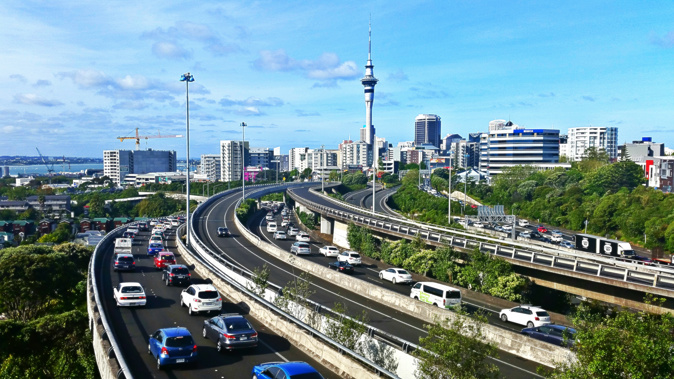
It's been through two years of hearings, but major changes could still be made to Auckland's Unitary Plan before it is passed.
Councillors are about to begin days of deliberations on thousands of pages of rules controlling the region's growth and development over the next 30 years.
They includes both a regional plan for the entire Auckland region, and a district plan for the mainland. There is a separate district plan for the Hauraki Gulf islands.
An independent hearings panel considered 1.5 million submission points before handing over a recommended plan to the council last month.
Council planners are now asking councillors to make further changes, to protect things like wellbeing and historic heritage and prevent urban sprawl.
They want minimum apartment sizes to be reintroduced and they want to make it harder for developers to expand the urban-rural limit.
Council staff want to reintroduced controversial rules, which would require local hapu and iwi to be told about proposed changes to sites of cultural value.
They also support heritage protections for historic parts of the city, and want demolition controls reintroduced for buildings on Queen Street built before 1940.
Any changes councillors make could be subject to legal appeals in the Environment Court.
What council staff are not okay with
1. Deleting ambient air quality standards, because it will remove limits for air pollutants, undermine other objectives, and create uncertainty in the resource consent process.
2. Deleting provisions to protect sites of value to mana whenua, because there is evidence the scheduled sites are significant and face the risk of ongoing degradation.
3. Deleting the Regional Policy Statement value to manage heritage values, because it will create a disconnection between the statement and the mainland district plan.
4. Deleting policies to prevent inappropriate subdivisions, promote indigenous biodiversity and allow only lifestyle blocks, because it could lead to subdivisions in productive land.
5. Deleting policies which encourage land use and transport to be aligned, because land use and transport in synch is key to an efficient transport network.
6. Deleting policies that focus growth within the existing metropolitan area, because focusing intensification in the existing areas will lead to a more compact and efficient city.
7. Changing policies on expanding the urban-rural limit, because it doesn't take into account the need for a compact urban city, and synching up land use and transport.
8. Enabling of commercial activities within centres and near corridors, because corridors isn't defined and the council wants to allow commerce outside centres only where appropriate.
9. Changing subdivisions in the Future Urban Zone from a prohibited activity to a discretionary activity, because it could facilitate the fragmentation of land.
10. Changing landfills in the Future Urban Zone from a non-complying activity to a discretionary activity, because landfills can have long-term adverse irreversible effects over a wide area.
11. Introducing a single set of rules for cleaning biofouling off the hulls of boats, because different rules should apply based on the risk of the biofouling.
12. Counting sea walls as a type of marine or port facility, because seas walls are hard protection structures which are subject to different rules.
13. Deleting framework plans that affect the height and gross floor area controls in Wynyard Quarter, because it will reduce development potential, especially on Jelicoe Street.
14. Deleting the pre-1940 building demolition control in the Queen Street Valley Precinct because it is integral to maintaining its special character, built form, architecture and streetscape.
15. Removing minimum dwelling/apartment sizes in the city centre and business zones, because it isn't addressed by the Building Act and could affect wellbeing and social cohesion.
16. Adding boundary height controls in mixed use zones near general business zones, because it could constrain development.
17. Adding a recessions plane indicator diagram for boundary heights in business zones, because it appears to have been an error.
18. Deleting standards to manage natural hazards at Auckland Port, because it would prevent port activities from taking place around natural hazards.
19. Deleting addition, height and gross floor area threshold standards for new builds, because open space and neighbours need to be considered.
20. Allowing integrated residential developments (retirement villages) as a restricted discretionary activity in a single house zone, because neighbours should be notified.
21. Allowing three or four dwelling buildings in mixed housing suburban and urban zones to be built without a resource consent, because it would lead to low quality design.
22. Deleting minimum dwelling/apartment size standards across the city for the same reasons as 15, because it isn't addressed by the Building Act and could affect wellbeing and social cohesion.
23. Deleting front fence rules and streetscape rules for residential zones, because allowing fence up to 2.5 metres high would result in ugly streetscapes.
24. Allowing an alternative boundary height controls without a resource consent, because the non-alternative controls should apply in those cases.
25. Removing height and alternative boundary height controls for road boundaries, because it would lead to upper floors being set back from the street.
26. Deleting water and wastewater capacity standards, because septic tanks can't be built in serviced urban areas and capacity in multi-unit developments needs to be assessed.
27. Deleting the definition of building coverage, which excluded eaves, because this could discourage or prevent people from building eaves.
28. Including objectives, policies and rules to allow sporadic rural subdivision, because it would undermine productive rural areas and a compact city.
28. Allowing rural divisions for minimal environmental benefit off-setting, because it would allow inappropriate subdivisions for minimal gains.
29. Removing recommended specific site sizes for lifestyle blocks on Caldwels Road in Whitford, because the subdivider agreed to the sizes.
What council staff are okay with
1. Deleting a vehicle emission buffer around childcare facilities, because it could be introduced later through a plan change.
2. Deleting a 500 metre buffer between heavy industry zones and residential areas, because those issues could be addressed through other policies.
3. Deleting the pre-1944 building demolition overlay, which there are other protections being introduced for special character areas.
4. Retaining the special character overlay for Howick business area, because it is historic as one of Auckland's oldest settlements.
5. Removing the Puhoi precinct and creating a Puhoi special character overlay, because it will allow new developments to follow the area's existing character.
6. Adding Hill Park in Manurewa and Pukehana Avenue in Epsom as special character areas, because of proven historic signficance.
7. Removing any reference to 1940 to demolition rules, because it will require demolitions of newer character buildings to be subject to the same criteria.
8. Changing the rural objective of "security of food supply" to "making a signifcant contribution to food supply" because it will have a similar effect.
9. Including the rural objective of landscape and biodiversity values, because it will strengthen the importance of those values in rural areas.
10. Removing protections for prime soils that apply for elite soils, because removing protections of potentially unfertile soils may not be pragmatic.
11. Moving the rural-urban boundary from regional policy to the mainland district plan, because boundary changes on Waiheke Island would still require plan changes or resource consents.
12. Deleting the urban-rural boundary in rural and costal settlements, because other rules will prevent the inappropriate expansion of these settlements.
13. Introducing stricter criteria for removing mangroves, because it will retain mangroves that are important for ecology and safety but still allow other mangroves to be removed.
14. Removing rules for living on houseboats, because they will still need to follow sewage rules, obtain permits and not block public access.
15. Treating any more than minor reclamation at Auckland Port as a discretionary activity, because it will require the effects of that reclamation to be fully assessed.
16. Treating any new wharfs or alterations to existing wharves at Auckland Port as a restricted discretionary activity, because it will allow appropriate matters to be considered.
17. Removing a viewshaft protection from the end of Queens Wharf out to the harbour, because it can be reintroduced through a plan change.
18. Deleting standards for building work and internal design, because they can be reintroduced through a plan change.
18. Deleting design standards and addressing design issues through the resource consent process, because it will be adequate.
19. Deleting framework plans around the Quay Park Precinct because they would be relatively minor.
20. Deleting urban design standards in business zones, because the plan will still try to achieve the same design outcomes.
21. Deleting internal design standards, because they could be introduced later through a plan change.
22. Increasing the height in Newmarket Metropolitan Centre from 32.5 metres to 72.5 metres, because protections of volcanic viewshafts will still apply.
23. Using single house zoning for special character areas, spacious avenues and coastal settings, because it provides for a range of living options in the city.
24. Allowing minor dwellings in single house zones, because they were already allowed in many places and will provide more housing choices.
25. Deleting the density control for sites of less than 1000 metres squared in mixed housing zones, because it will provide greater housing capacity and choice.
26. Deleting development standards for the garages and dwellings fronting streets, because they are usually not an issue for standalone houses.
27. Deleting the retained affordable housing provisions, because allowing more homes to be built is a better way of making sure homes are affordable.
28. Changing subdivisions in the Waitakere Ranges Heritage Area from prohibited to non-complying, because the area is protected by legislation anyway.
29. Changing the Waitakere Ranges Heritage Area from a precinct to an overlay, because the area is protected by legislation anyway.
29. Changing the Waitakere Ranges precincts into a Waitakere Ranges zone and a Waitakere Foothills zone, because limited development in the foothills is okay.
30. Rezoning these areas, because it will still allow subdivision to be controlled around Titirangi and Langholm.
31. Removing restrictions in the Waitakere Ranges which are managed by bylaws or other rules, or are unnecessary, because the area is protected by legislation anyway.
32. Adding these zones to the Regional Plan, because it will change how they are enforced and could be outside the law.
Take your Radio, Podcasts and Music with you









